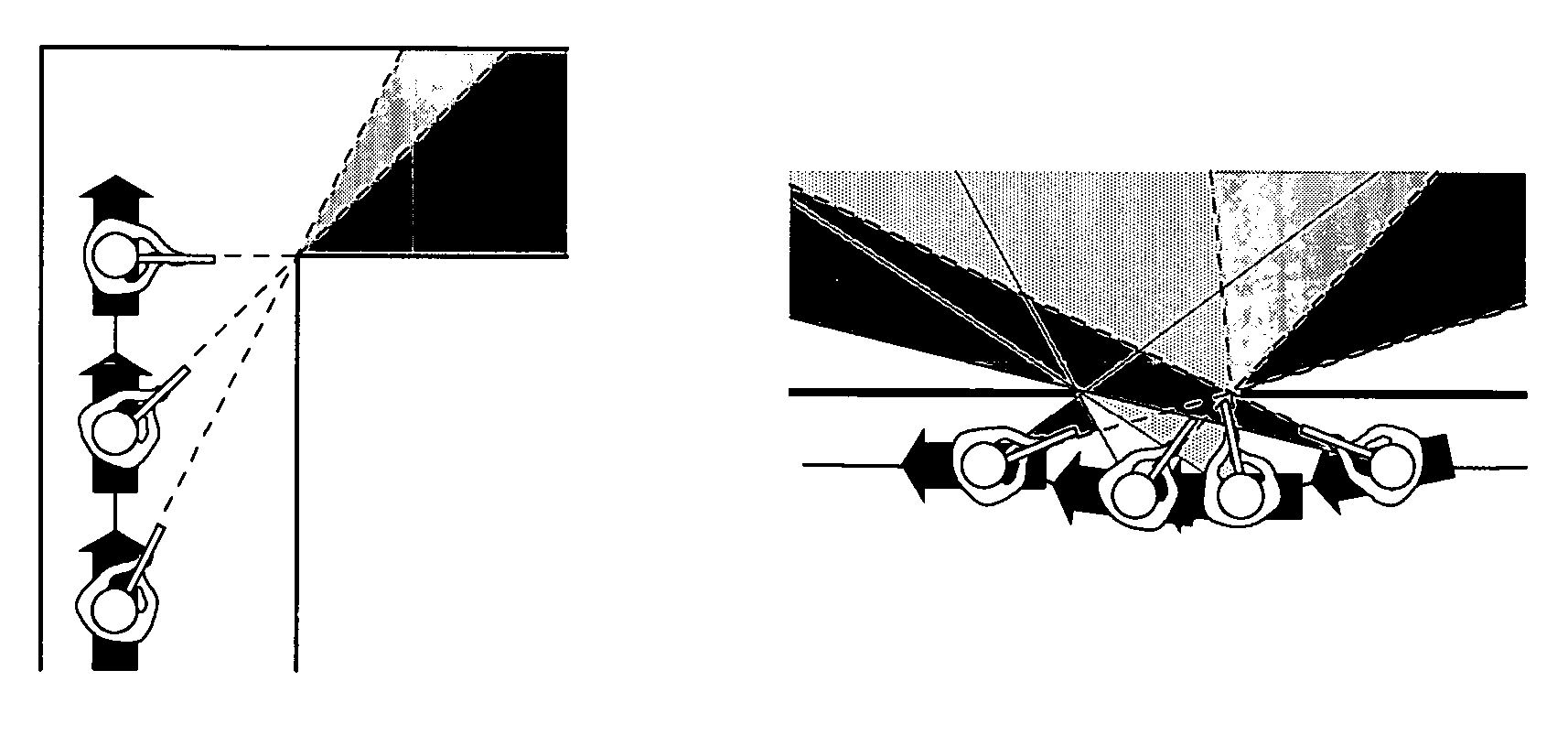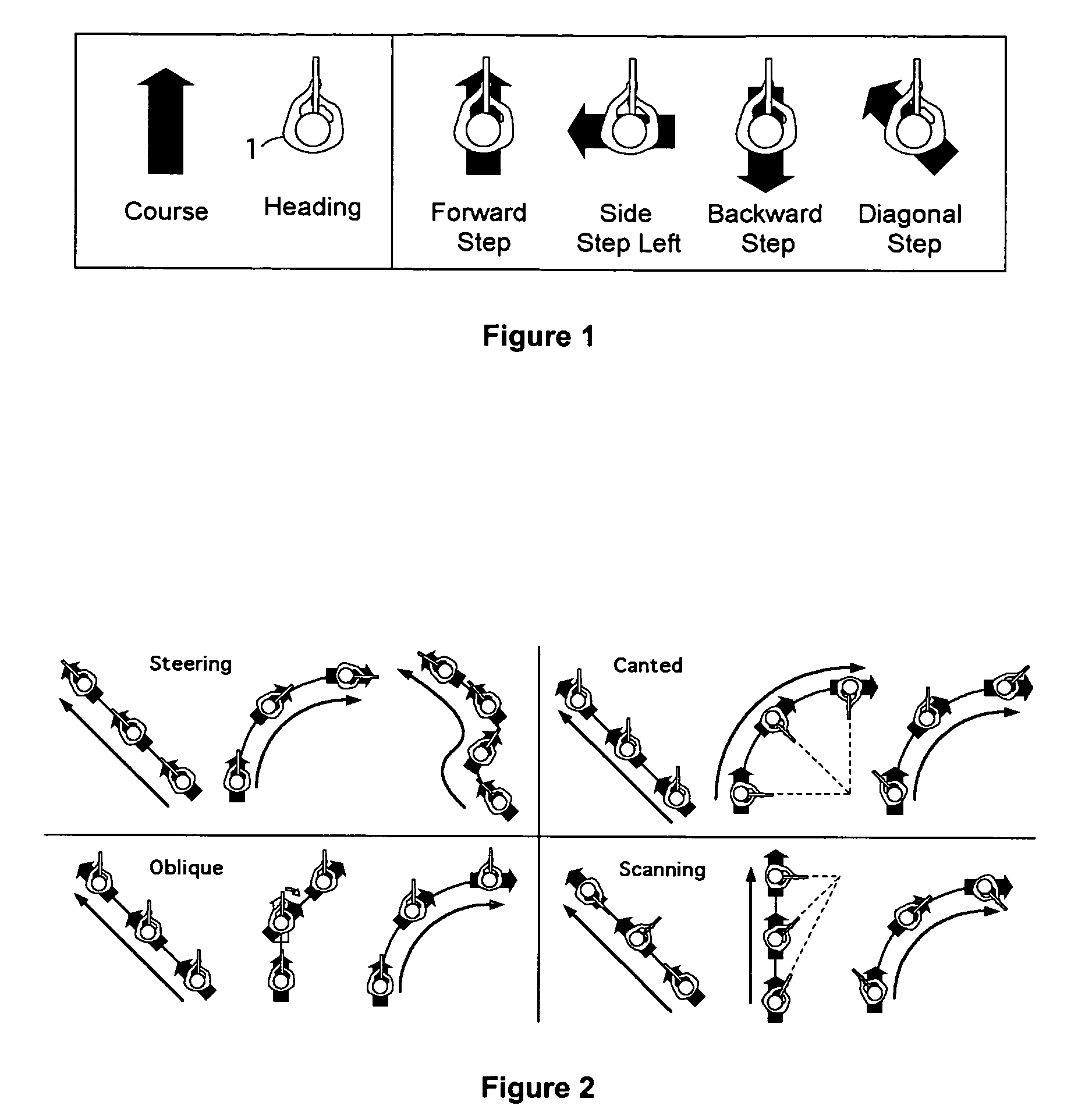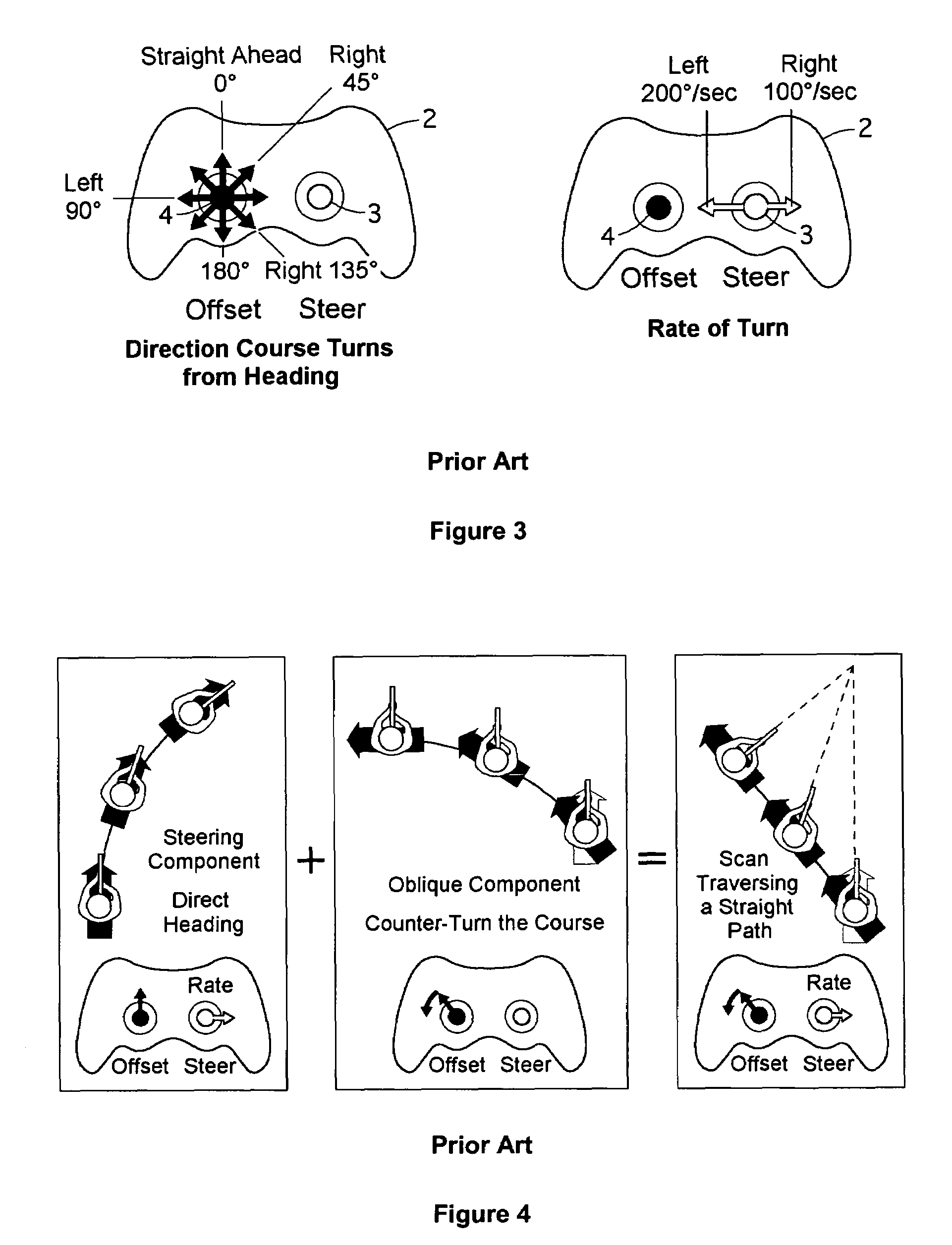Open-loop controller
a controller and open-loop technology, applied in the field of open-loop controllers, can solve the problems of limited ability to estimate the extent of turning, bias the nature of the control, and the control used to drive ground vehicles does not provide as wide a range of maneuvering, so as to improve the sense of expression, control and identification, and facilitate the coordination of directional aspects of motion. , the effect of learning to coordinate the aspects
- Summary
- Abstract
- Description
- Claims
- Application Information
AI Technical Summary
Benefits of technology
Problems solved by technology
Method used
Image
Examples
Embodiment Construction
[0079]FIGS. 6, 7, 8, 9, 23, and 24 will now be referenced in which like numbers represent like elements, showing an apparatus 10 for interfacing the manipulation of input control devices as described below (30, 24, 16) operated by a user 12 on a seat 22 to control the course, heading, displacement, and head-pose of an avatar 18 or a remotely operated vehicle 48. A view of the virtual environment 32 as seen from the avatar (or relative to the avatar if it's not a first person view), or of the real world environment 44 as seen from the remotely operated vehicle 48, is presented to the user using a display that may be either a stereo head-mounted display 28, or alternatively, a standard desktop screen-based display 29. The Z800 3DVisor, manufactured by eMagin, is a good example of a low cost head-mounted display for this purpose.
[0080]The apparatus 10 in one embodiment includes a dual-joystick gamepad 30, used for controlling the course and heading, such as the Sony Corp. DUALSHOCK®2An...
PUM
 Login to View More
Login to View More Abstract
Description
Claims
Application Information
 Login to View More
Login to View More - R&D
- Intellectual Property
- Life Sciences
- Materials
- Tech Scout
- Unparalleled Data Quality
- Higher Quality Content
- 60% Fewer Hallucinations
Browse by: Latest US Patents, China's latest patents, Technical Efficacy Thesaurus, Application Domain, Technology Topic, Popular Technical Reports.
© 2025 PatSnap. All rights reserved.Legal|Privacy policy|Modern Slavery Act Transparency Statement|Sitemap|About US| Contact US: help@patsnap.com



